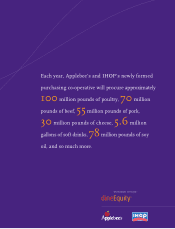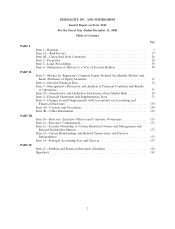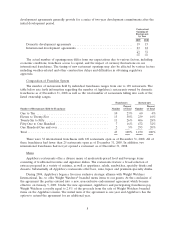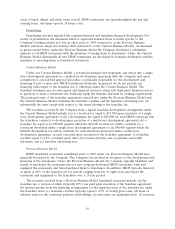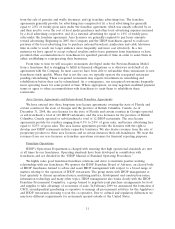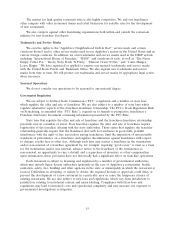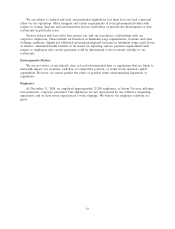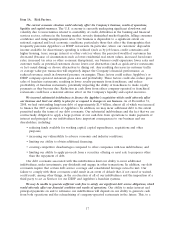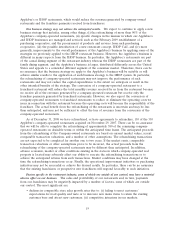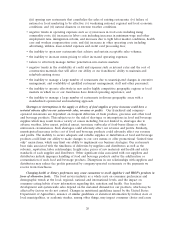IHOP 2008 Annual Report Download - page 24
Download and view the complete annual report
Please find page 24 of the 2008 IHOP annual report below. You can navigate through the pages in the report by either clicking on the pages listed below, or by using the keyword search tool below to find specific information within the annual report.
array of lunch, dinner and snack items as well. IHOP restaurants are open throughout the day and
evening hours, and many operate 24 hours a day.
Franchising
Franchising activities include both company-financed and franchisee-financed development. For
clarity of presentation, the discussion below is separated between those activities specific to the
Company’s business model as it was in effect prior to 2003 (referred to as the Previous Business
Model) and those adopted in January 2003 (referred to as the Current Business Model). As discussed
in greater detail below, under the Previous Business Model the Company developed a substantial
majority of all IHOP restaurants with the intention of leasing them to franchisees. Under the Current
Business Model substantially all new IHOP restaurants are developed by franchise developers with the
intention of operating them as franchised restaurants.
Current Business Model
Under our Current Business Model, a potential franchisee first negotiates and enters into a single
store development agreement or a multi-store development agreement with the Company and, upon
completion of a prescribed approval procedure, is primarily responsible for the development and
financing of one or more new IHOP franchised restaurants. In general, we do not provide any
financing with respect to the franchise fee or otherwise under the Current Business Model. The
franchise developer uses its own capital and financial resources along with third party financial sources
to purchase or lease a restaurant site, build and equip the business and fund its working capital needs.
The principal terms of the franchise agreements entered into under the Previous Business Model and
the Current Business Model, including the franchise royalties and the franchise advertising fees, are
substantially the same except with respect to the terms relating to the franchise fee.
The revenues received by the Company from a typical franchise development arrangement under
the Current Business Model include (a) (i) a location fee equal to $15,000 upon execution of a single
store development agreement or (ii) a development fee equal to $20,000 for each IHOP restaurant that
the franchisee contracts to develop upon execution of a multi-store development agreement; (b) a
franchise fee equal to (i) $50,000 (against which the $15,000 location fee will be credited) for a
restaurant developed under a single store development agreement or (ii) $40,000 (against which the
$20,000 development fee will be credited) for each restaurant developed under a multi-store
development agreement, in each case paid upon execution of the franchise agreement; (c) franchise
royalties equal to 4.5% of weekly gross sales; (d) revenue from the sale of pancake and waffle
dry-mixes; and (e) franchise advertising fees.
Previous Business Model
IHOP franchised restaurants established prior to 2003 under our Previous Business Model were
generally developed by the Company. The Company was involved in all aspects of the development and
financing of the restaurants. Under the Previous Business Model, the Company typically identified and
leased or purchased the restaurant sites for new company-developed IHOP restaurants, built and
equipped the restaurants and then franchised them to franchisees. In addition, IHOP typically financed
as much as 80% of the franchise fee for periods ranging from five to eight years and leased the
restaurant and equipment to the franchisee over a 25-year period.
The revenues received from a Previous Business Model franchised restaurant include: (a) the
franchise fee, a portion of which (typically 20%) was paid upon execution of the franchise agreement;
(b) interest income from the financing arrangements for the unpaid portion of the franchise fee under
the franchise notes; (c) franchise royalties typically equal to 4.5% of weekly gross sales; (d) lease or
sublease rents for the restaurant property and building; (e) rent under an equipment lease; (f) revenues
10


